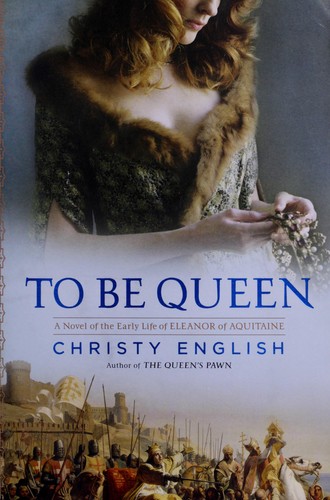I'm so excited to have Tony Hays on All Things Historical Fiction. He is the author of an Arthurian series and is here today to discuss how he was able to capture Camelot as it may have looked for his newest book, The Beloved Dead. Stay tuned next month for my review of his first novel in his Arthurian series, The Killing Way. So lets get to the guest post!
Tony Hays author of The Beloved Dead
Tony's Journey in Discovering What May Have Been the True Camelot
Sometimes, you paint yourself into a corner that is really, really difficult to deal with. But I had no real choice. I had boxed myself in to a 16 mile hike across southwest England, from South Cadbury to Glastonbury, as the crow flies as much as possible.
I had driven the route many times, knew it by heart. Plus, I had hoofed up and down and all over South Cadbury Hillfort and Glastonbury, the primary settings for my new Arthurian mystery series, starting with The Killing Way and followed by The Divine Sacrifice.
But my earlier research trips had been relatively short, a week or two at the most. This time, I had moved to England for six months, leasing an efficiency flat in the little village of Butleigh, about five miles to the south by southeast of Glastonbury. So, time was not a real consideration as it had been before. And I wanted The Beloved Dead, the third in my Arthurian series, to be the biggest and best yet, in every way. For me, that meant walking the ground as my characters had, smelling the smells and climbing the hills.
Arthur & Guinevere Sign
While archaeologists and historians are split on whether Arthur was real or not, they are unanimous in saying that the hillfort at South Cadbury underwent a massive renovation and rebuilding project at just the time that Arthur would have lived by someone who had Arthurian-sized resources at his command. And as early as 1541, local folklore had made this hill Arthur’s headquarters. It was a natural for my mid 5th century world of mud, wooden huts, foul smells and raiding Saxons.
Glastonbury was a given. The earliest traditions made the “Mother Church” at Glastonbury Abbey perhaps the earliest Christian site in England. The alleged 1191 exhumation of Arthur and Guinevere by the monks at Glastonbury just put the proverbial icing on the cake, not to mention the assertion that on the infamous lead cross buried with our lovers was a claim that Guinevere was Arthur’s second wife. Then there was that pesky early story of a king of the “Summer Country” named Melwas, who kidnapped Guinevere. No, drive-by research wasn’t going to cut it this time around. So much of the novel’s action took place between South Cadbury and Glastonbury that I was going to have to apply shoe-leather to pavement, so to speak.
Across the Levels from Copley Wood
So, one fine July day, I put on my special Dark Ages shoes (a pair of high top sneakers that really have little sole to them so it’s like walking in a moccasin or having your feet wrapped in leather), strung my pouch from my shoulder and started out from the hillfort, headed to the abbey. My goals were twofold – find out how long it would take to walk from South Cadbury to the abbey, and get a sense of what that journey would entail in physical exertion etc.
Copley Wood
From the summit of the hillfort, Glastonbury Tor can be seen in the distance, across the southern reaches of the Somerset Levels, rising like a pointing finger into the sky. Up there the route looks fairly straightforward, but in reality the path is a little more circuitous than it would appear. The British love their walking paths, and I stuck to those as much as possible. Headed in a generally northwest direction, I had certain places I wanted to include – Copley Wood, Compton-Dundon Hillfort, the Polden Ridge.
So, I started along the Leland Trail, a series of footpaths associated with the great tour of John Leland, Henry VIII’s antiquary. That took me generally along the A303, to West Camel. From there, I turned north and took Steart Lane up to Charlton Mackrell and Charlton Adam. This much of the journey was fairly uneventful. I had kept a brisk pace, as I suspected that people in my time period would do.
Compton Dundon Hillfort
But then came the fun. I switched onto a road that eventually became known as Reynald’s Way, that ran up and along the Polden Ridge, and across a bank and ditch known as the New Ditch that may date to the Iron Age, but also was probably in use in the Dark Ages as well. What you have to understand about the Levels is that back in the Dark Ages, a good hard rain could flood the levels so that Glastonbury, Compton-Dundon Fort, and the Polden Ridge were almost islands that rose above the flood waters. And the Polden Ridge would have been if not the safest, at the least the driest route to Glastonbury. I’ve often believed that New Ditch had a defensive purpose in the days of Arthur.
By the time that I had reached the spine of the ridge, I was out of breath and wondering why I demanded so much accuracy of myself. I mean really; could anyone in the 21st century actually learn anything about life in the 5th century by hiking 16 miles? My pounding heart said no, echoed by my blistering feet. They were, if anything, a hardier people. But then I turned down into Copley Wood, to catch a glimpse of the Compton-Dundon Hillfort. And suddenly, I was back in the 5th century, hiking along forest trails with my protagonist, Malgwyn.
It took little effort to imagine what travel would have been like back in those days. Other than the Fosse Way, the closest Roman road, travellers would have been forced onto dirt lanes like these. Narrow, dark, barely wide enough for a single wagon and ox. I twisted my ankle twice picking my way down trail. I breathed deeply of the air.

As I emerged from the tree line, I saw the hillfort, smaller than Cadbury Castle, but impressive nonetheless. I felt stronger then, and I determined to complete my quest by hiking down through the village and up onto the hillfort plateau. I had a special reason for wanting to see that fort, but that is a surprise that you’ll have to read The Beloved Dead to discover. Let’s just say that I found it the perfect setting for what I had in mind.
The sun had travelled well past meridian height by the time that I made it back up to Reynald’s Way. I picked up the pace, pausing only long enough to note the location of New Ditch. Yes, it would have been an excellent place for a defensive barrier. The land dropped off on either side, making this an effective bottle neck.
Continuing on down the road as it began to slope down towards the B3151 heading into what is now Street, England, but back then was probably just forest, perhaps a farmstead or two. I stopped before I reached Pomparles Bridge, that place where Bedevere launched the mortally wounded Arthur off in a boat for the Isle of Avalon. Turning left, I followed a side street until I found the parish church, a place believed so anciently divine that it once held a Roman shrine before a small chapel, known as Lantokay or Kay’s Chapel, was built from its ruins.
I timed how long it took me to get there and back to the main road, and how long it took me to make it to Pomparles. Breathing, feet, all were forgotten by then.
Glastonbury Tor from Cadbury Castle
I was there. Where my book would happen. And, whether because of exhaustion or a too active imagination, I was when it was as well. The cars were gone. The houses too. I could see how Glastonbury and its famous Tor would look like an island when the waters were high. I could see the fortress of the Dark Ages lord thought to have been atop the Tor. And as I tramped across the bridge, I was walking on wood and stone and then along a muddy trackway at the foot of Wearyall Hill. Then , I was in the Abbey grounds, looking at where the “Mother Church” had stood. Night was about to fall, and in the darkness I thought I could see the lamps in the monks’ huts, their dark, robed, huddled forms scurrying about the ground.
I could write the book then. I had been there. I had seen it.
Storm Clouds Over Camelot
To celebrate, I took a taxi back to my flat in Butleigh. The journey was finished, but the magic was still in my head. I dove into the book in earnest, and wrote as quickly and as well as I ever have. All because of a single research trip.





































